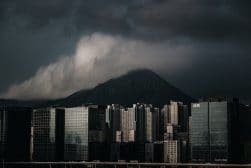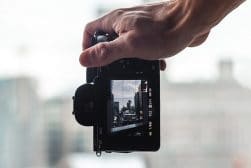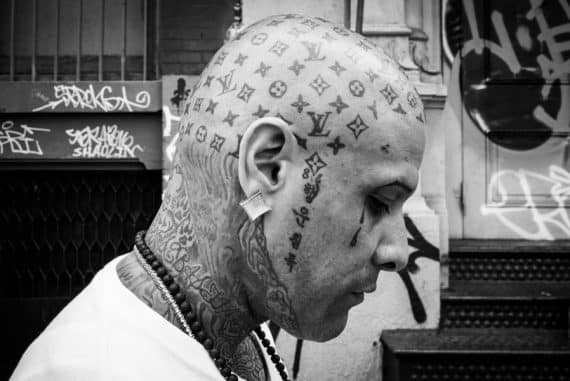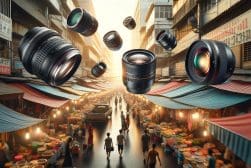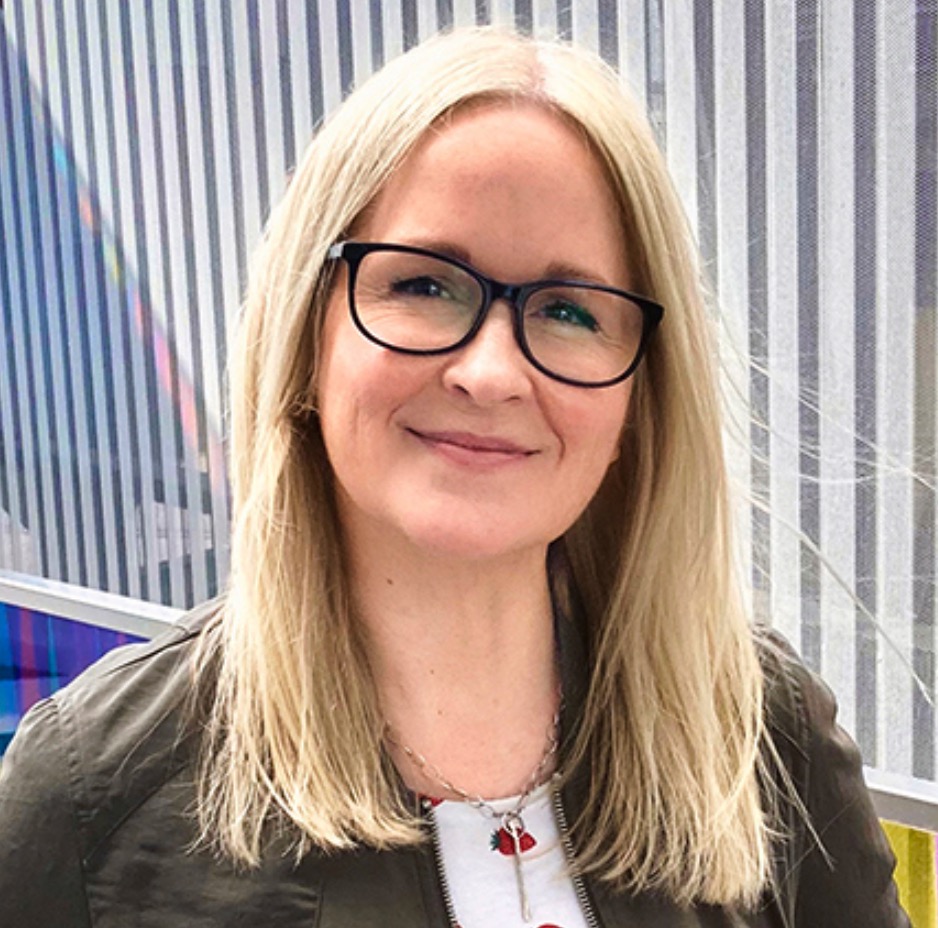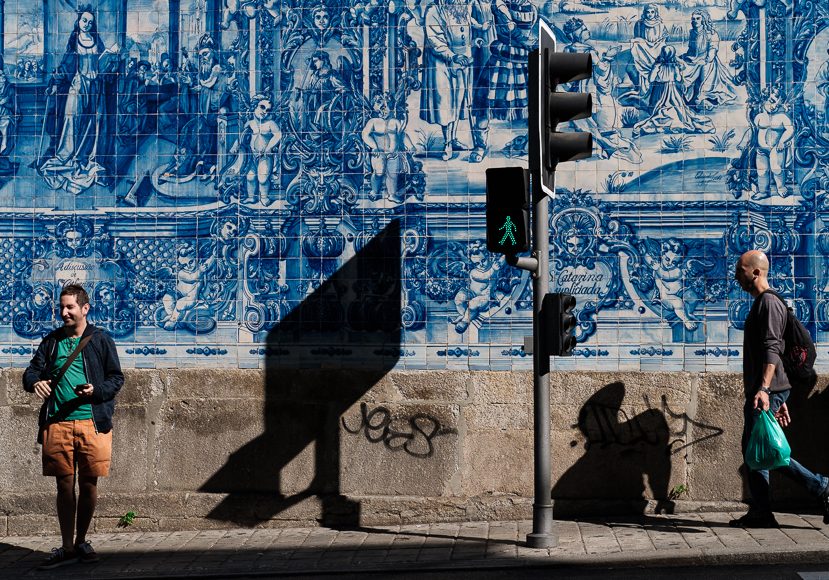
Composition in Street Photography: How to Make Your Images Pop
From classic composition tools to the mind-bending Gestalt principles, learn how to take street photos that truly pop.
Learn | Street Photography | By Polly Rusyn
Have you ever sauntered down a busy city street, soaking in the kaleidoscope of sights, and thought, “I have to capture this!”?
Well, you’re not alone. Street photography lets us freeze those fleeting moments and make them last forever.
But to create images that truly stand out, it’s all about mastering the art of composition.
Now, don’t worry if you’re not a seasoned pro. I’ve got your back!
First I’ll introduce you to the classic composition tools that’ll give your photos that extra zing. You’re probably already familiar with tried-and-true techniques like the Rule of Thirds, Leading Lines, and more.
I’ll break them down and show you how to make them work for your street shots.
But I won’t stop there. I’m also going to explore the fascinating world of Gestalt principles.
These powerful visual perception concepts will help you see the streets in a whole new light, and elevate your photography game to the next level.
By the time you finish reading, you’ll be armed with the know-how to create street photos that grab attention and make a lasting impression.
Let’s dive in and discover the secrets of eye-catching street photography composition!
1. Classic Photography Composition Tools
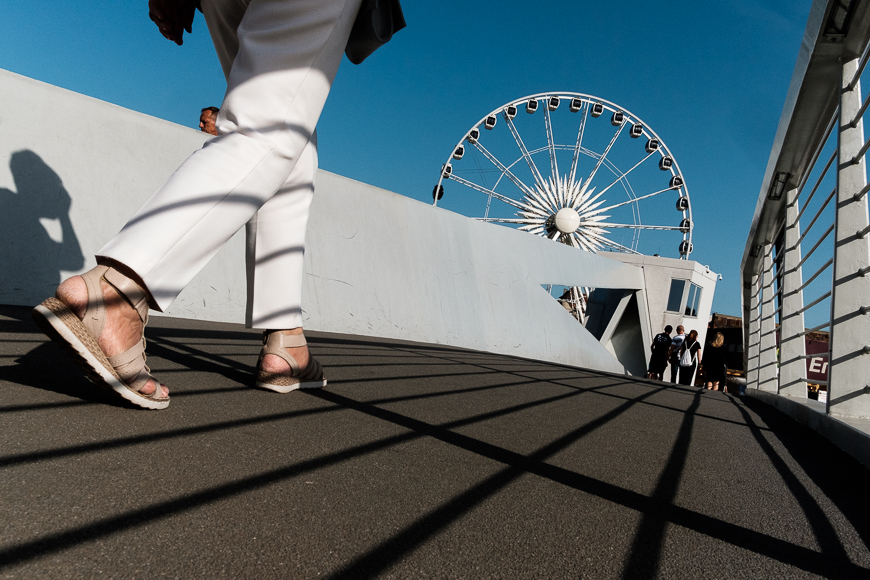
© Polly Rusyn
Let’s get into the treasure trove of classic composition tools.
These tried-and-true techniques are like the secret ingredient in Grandma’s famous cookies – they just make everything better. So, let’s roll up our sleeves and get to know these timeless tactics!
Rule of thirds: Divide and conquer the frame
Chances are, you’ve come across the rule of thirds before. Imagine your frame divided into nine equal pieces by two horizontal lines and two vertical lines.
The goal here is to position your main subject along these lines or at their intersection points. It’s all about creating that visual harmony, and experimenting with something better than boring old center composition.
Balancing subjects and negative space
Using the rule of thirds helps you strike that perfect balance between your subject and the surrounding negative space. Your photos will feel more natural and inviting – kind of like a warm hug for the eyes.
Visual interest through intersection points
Those intersection points we talked about earlier? They’re your ticket to a more engaging photo. Pop your subject right on one of those sweet spots, and you’ll draw your viewer’s gaze like a magnet.
Leading lines: Let the streets guide your eyes
In the urban jungle, there’s no shortage of lines. Think sidewalks, roads, and buildings – they’re all just waiting to be put to good use in your compositions.
Leading lines are like a VIP tour guide, directing your viewers’ eyes straight to the main event.
Natural urban elements as lines
Don’t be shy about using the city’s built-in lines to your advantage. Streetlights, fences, and even rows of parked cars can serve as visual guides, adding depth and dimension to your shots.
How Much Do You REALLY Know About Photography?! 🤔
Test your photography knowledge with this quick quiz!
See how much you really know about photography...

Directing viewers to the main subject
When you use leading lines effectively, you’re taking your viewers on a journey. Their eyes will follow the lines you’ve set up, making a beeline for your main subject.
They’re a powerful tool for creating dynamic, eye-catching photos.
Framing: Windows to the urban soul
The city is chock-full of opportunities for framing your subjects. Architectural features, objects, or even other people can be used to create a frame within your frame.
Using architectural features and objects
Keep an eye out for interesting elements that can serve as frames, like doorways, arches, or even a hole in a wall.
These natural frames help draw focus to your subject and can add a touch of drama to your shots.
Enhancing context and visual depth
Framing isn’t just about making your subject stand out; it’s also a sneaky way to give your viewers more context.
A well-chosen frame can tell a story about the location or the people in your shot, adding layers of meaning to your images.
Juxtaposition: Contrast is the spice of street life
In the world of street photography, contrast is king.
Juxtaposing elements that don’t usually go together can make for some seriously striking photos. The more unexpected the pairing, the more memorable the image.
Pairing opposites for a visual punch
Look for opportunities to showcase contrasting elements, like old and new buildings, a businessman next to a street performer, or bright colors against a drab background.
These visual contrasts will give your photos an irresistible edge.
Merging stories for compelling narratives
Juxtaposition can also help you tell a richer story by blending seemingly unrelated elements.
Maybe it’s a tender moment unfolding against the backdrop of a busy city street or a solitary figure surrounded by the chaos of a bustling market.
2. Gestalt Principles of Visual Perception
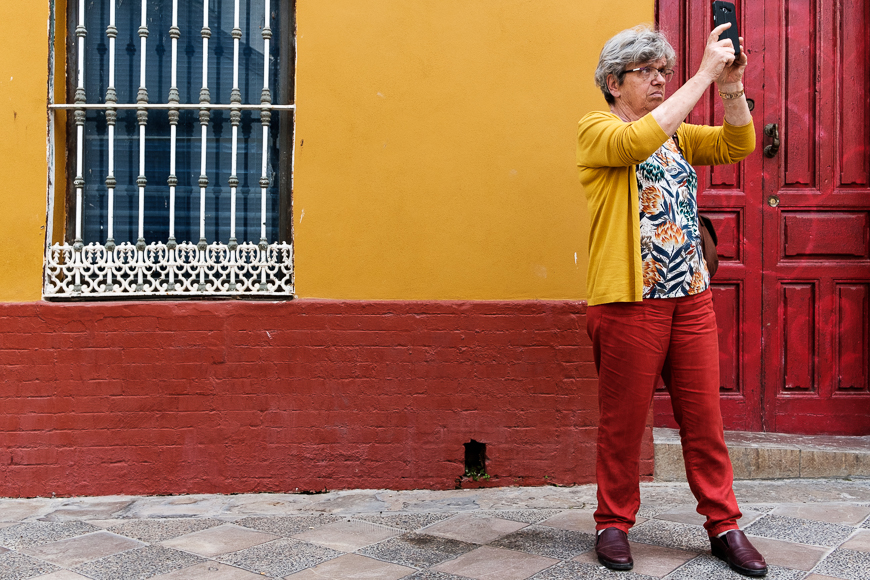
© Polly Rusyn
Now that we’ve got the classic tools under our belt, let’s venture into the intriguing world of Gestalt principles.
These visual perception gems will help you see the streets with fresh eyes, and they’ll add a whole new dimension to your photography game.
Ready to dive in? Let’s go!
Proximity: Close encounters of the street kind
In the hustle and bustle of city life, things have a habit of getting up close and personal.
When elements are near each other, they’re seen as belonging together, according to the principle of proximity. It’s all about creating that visual bond.
Grouping elements to create unity
Keep an eye out for clusters of similar subjects or objects on the streets. By framing them together, you can create a sense of unity, rhythm, and cohesion in your images, turning random chaos into a harmonious scene.
The power of space in storytelling
Playing with the space between subjects can also help you tell a more engaging story.
Experiment with the distance between elements to create tension or convey a sense of connection (or disconnection) between them.
Similarity: Patterns, the city’s secret code
The urban landscape is brimming with patterns – colors, shapes, and sizes that repeat and dance through your frame.
When elements share similar characteristics, our brains naturally group them together, creating a sense of harmony and order.
Using color, shape, and size for harmony
Keep your eyes peeled for patterns in your surroundings, and use them to bring a sense of rhythm to your images.
Whether it’s a row of colorful doors or the repeating windows of a skyscraper, these visual echoes can make your photos sing.
Breaking patterns for attention-grabbing images
Ready for a plot twist?
Try breaking the pattern you’ve established by introducing an element that doesn’t quite fit.
This disruption will stand out like a sore thumb, instantly grabbing your viewer’s attention and adding a touch of intrigue to your composition.
Continuity: Dimensional illusions and flow
The principle of continuity suggests that our eyes naturally follow a path or line, even when it’s broken or changes direction.
In street photography, you can use this to your advantage to create a sense of movement and flow, and a merging of dimensions…
Aligning elements for a seamless flow
Look for ways to line up elements in your frame, even if they’re not directly connected.
This visual continuity will guide your viewer’s eye through your image, creating often a surreal and unreal blending of background and foreground.
Creating visual paths for dynamic compositions
Don’t be afraid to play with different paths and directions in your compositions. Experiment with diagonal, curved, or zig-zag lines to create a sense of energy and excitement in your images.
Closure: Connecting the urban dots
Our brains love to fill in the blanks, and the principle of closure is all about taking advantage of this natural tendency.
When we see incomplete shapes or forms, we instinctively complete them in our minds.
Completing incomplete shapes for intrigue
Try framing your subjects so that they’re partially obscured or cut off by the edge of your frame.
This will engage your viewer’s imagination, inviting them to fill in the gaps and complete the picture themselves.
Using triangles to keep the viewer’s eyes going in circles
When organizing a group of three or more people in your frame, always think about placing heads at different heights.
This naturally creates a triangle if you were to think of the faces as dots and join them.
So, when someone is looking at your photo, their eyes are circling around from one face to another, keeping them in the frame and engaged in your photograph.
3. Tips for Applying Composition and Gestalt Principles in Street Photography
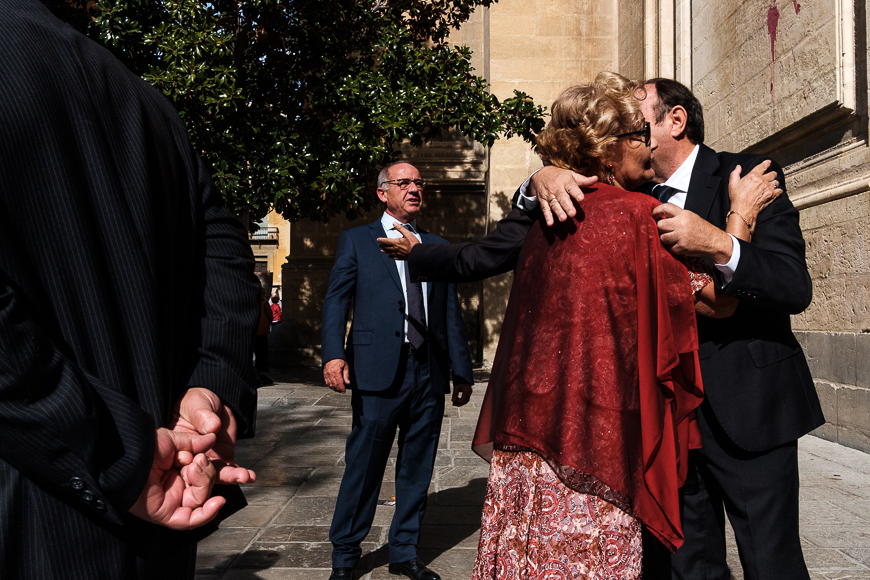
© Polly Rusyn
Now that we’ve explored the fantastic world of classic composition tools and Gestalt principles, it’s time to put that knowledge to work!
Here are some handy tips to help you apply these concepts in your street photography adventures:
Be observant and patient
The streets are alive with endless photographic possibilities, so keep those eyes wide open!
Train yourself to spot interesting patterns, lines, and juxtapositions as you wander the urban jungle.
And remember, good things come to those who wait, so be patient and let the perfect shot reveal itself.
Practice and experiment with different compositions
There’s no better way to improve your street photography game than by getting out there and shooting.
Practice makes perfect, after all!
Experiment with different compositions, play with the rules, and don’t be afraid to break them when the moment calls for it.
The more you shoot, the better you’ll become at spotting those winning compositions.
Embrace spontaneity and the unpredictable nature of the streets
Finally, remember that the streets are a wonderfully chaotic and unpredictable playground.
Stay open to the unexpected and embrace the spontaneity that comes with street photography.
Sometimes, the most memorable shots are the ones you never saw coming. So, trust your instincts, follow your curiosity, and let the magic of the streets guide your lens!
Conclusion
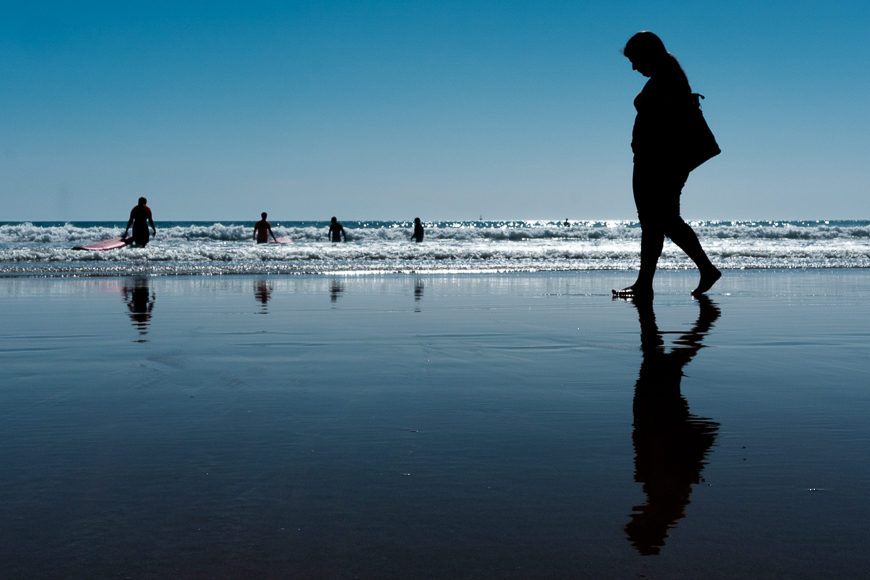
© Polly Rusyn
We’ve covered some serious ground here, from classic composition tools to the mind-bending Gestalt principles.
Now it’s time to take that knowledge and unleash your creativity on the urban stage!
Remember, the city streets are brimming with stories just waiting to be captured, so trust your instincts, play with the rules, and let your imagination run wild.
With a little practice and patience, you’ll be crafting street photos that pop and leave a lasting impression.
For more tips that can help, also check out my post on using light and shadow to create dramatic street photos.
So, go on, grab your camera, and make the city your canvas!

Check out these 8 essential tools to help you succeed as a professional photographer.
Includes limited-time discounts.





